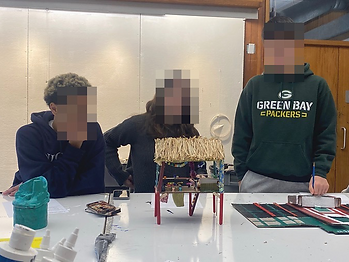top of page
Teaching Philosophy
Pedagogy & Goals
Contemporary Curriculum
-
Relevant, choice-based projects that provoke meaning and student voice
-
Opening up the understanding of art with Principles of Contemporary Art, such as elements of hybridity, globalization, movement, time, performance, process, polarization, representation, and narrative
-
Inclusive and experimental approaches based on rigor and problem-solving that enables students to build and sustain an art practice fueled by their own identities and reflections
-
Space for joy and play for Social Emotional Learning and safety for risk-taking


Diversity & Inclusion
-
Open-ended and identity -based work that celebrates student culture and experience
-
Approaches deconstructing the art curriculum with a wider lens that expands beyond dominant culture and is inclusive to a post-colonial, indigenous perspective in order for all students to thrive
-
Communicates information via many modes: verbally, visually, digitally on canvas, as well as allowing for group work
-
Student-centered systems to empower students with more agency everyday in the space
-
Expose students to many kinds of art and the many lens we may value art through
Community & Collaboration
-
Questioning the many purposes and kinds of art by analyzing artists and artworks in group discussions
-
Engaging with community within and outside the classroom with public, activist, or socially engaged art
-
Students experience how their work can be expanded through collaboration
-
Full class projects where students communicate and problem-solve on something together
-
Building a safe space for students to explore their identities while learning new perspectives


Critique
-
Multiple formats for student and instructor feedback - large group, small group, written, and through a variety of looking and thinking prompts
-
Use of Critical Response Process for student-centered critique that offers clear and productive structure while eliminating bias
-
Students take inspiration from one another, connect on interests, share techniques, and offer feedback
Assesment
-
Student receives peer grading as well as instructor feedback
-
Self-grading promotes student reflection using a series of prompts and questions inclusive of process and failure that help determine where on the rubric the work falls
-
Maintain high bar of quality of work, effort, experimentation and craft
-
Students conclude class with presentation of how their thinking has changed, how they've grown, and how they would like to apply skills in the future


bottom of page





